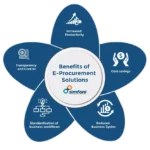Registered Investment Advisors (RIAs) face numerous challenges in managing client relationships, from maintaining accurate records to delivering personalized advice. The advent of RIA has revolutionized the way these professionals operate, providing tools to streamline client management and enhance service delivery. These platforms integrate various functions into a single, cohesive system, improving overall efficiency. They also offer advanced analytics and reporting capabilities, aiding in better decision-making. There are several ways these platforms can transform your client management processes.
1. Centralized Client Data Management
One of the primary benefits of using a platform is the ability to centralize client data. Traditional methods often involve disparate systems, which can lead to inefficiencies and errors. With a comprehensive platform, advisors can store all client information in one place, ensuring easy access and consistency. This centralization facilitates better data management, allowing advisors to quickly retrieve client information, update records, and maintain accurate profiles. Additionally, it improves collaboration among team members because everyone has access to the same up-to-date information. Centralized data also aids in compliance and reporting. Regulatory requirements demand careful record-keeping and regular reporting. The RIA-based platform simplifies these tasks by providing built-in compliance tools and generating reports with a few clicks. This saves time and reduces the risk of non-compliance, protecting both the advisor and the client. It also ensures all regulatory updates are promptly implemented across the board, keeping advisors consistently compliant.
2. Improved Client Communication
Effective communication is crucial for maintaining strong client relationships. The RIA platform offer various tools to enhance communication, making it easier for advisors to stay in touch with their clients. These platforms often include features like secure messaging, video conferencing, and automated updates. Secure messaging ensures sensitive information is exchanged safely, while video conferencing allows for more personal interactions without the need for in-person meetings. Automated updates keep clients informed about portfolio changes and market trends, enhancing their engagement and trust. The platforms can also automate routine communications, such as sending portfolio updates or reminders for upcoming meetings. This automation frees up time for advisors, allowing them to focus on more strategic activities. It also ensures clients receive timely information, which can improve their satisfaction and trust in the advisor’s services. Automated communications can be customized to reflect the client’s preferences and needs, enhancing the personalization of the service. Furthermore, consistent communication helps in maintaining a proactive advisory approach, addressing client concerns before they escalate.
3. Enhanced Portfolio Management
Managing client portfolios is a complex task that requires careful analysis and decision-making. Platforms for RIAs provide sophisticated tools to streamline portfolio management, making it easier for advisors to create, monitor, and adjust investment strategies. These tools often include portfolio modeling, risk assessment, and performance tracking. Advisors can simulate various market conditions and predict potential outcomes, helping clients make informed decisions. The integration of these tools ensures portfolios are continuously optimized to meet clients’ financial goals and risk tolerance. With a robust platform, advisors can model different investment scenarios and assess their potential impact on client portfolios. This capability enables more informed decision-making and personalized advice. Risk assessment tools help advisors evaluate the risk profile of each client and recommend suitable investment options. Performance tracking allows advisors to monitor portfolio performance in real time and make adjustments as needed to align with clients’ goals and market conditions. Moreover, these tools can generate detailed reports that keep clients informed about their portfolio status and performance.
4. Efficient Workflow Automation
Another significant advantage of these platforms is their ability to automate various workflows. From client onboarding to routine administrative tasks, automation can significantly enhance efficiency and accuracy. For instance, client onboarding involves multiple steps, including data collection, verification, and account setup. The platform can automate these processes, reducing the time and effort required and minimizing the risk of errors. This automation also ensures consistency in client experiences and streamlines compliance with regulatory standards. Workflow automation extends to other areas such as billing, reporting, and document management. By automating these tasks, advisors can ensure they are completed accurately and on time. This not only improves operational efficiency but also enhances the overall client experience. Clients benefit from faster service delivery and fewer errors, which can increase their satisfaction and loyalty. In addition, automation allows advisors to allocate more time to strategic planning and client interactions, further enhancing the value of their services.
Embracing the Future of Client Management
Platforms for RIAs offer numerous benefits that can transform how advisors manage client relationships. By centralizing data, improving communication, enhancing portfolio management, and automating workflows, these platforms help advisors operate more efficiently and effectively. Embracing a platform is not just about keeping up with technology; it’s about providing better service to clients and achieving greater success as a professional advisor. As the financial advisory landscape continues to evolve, leveraging these tools will be essential for staying competitive and meeting the growing demands of clients. Adopting these platforms can lead to increased operational agility and improved client satisfaction, setting the stage for long-term growth and success.








